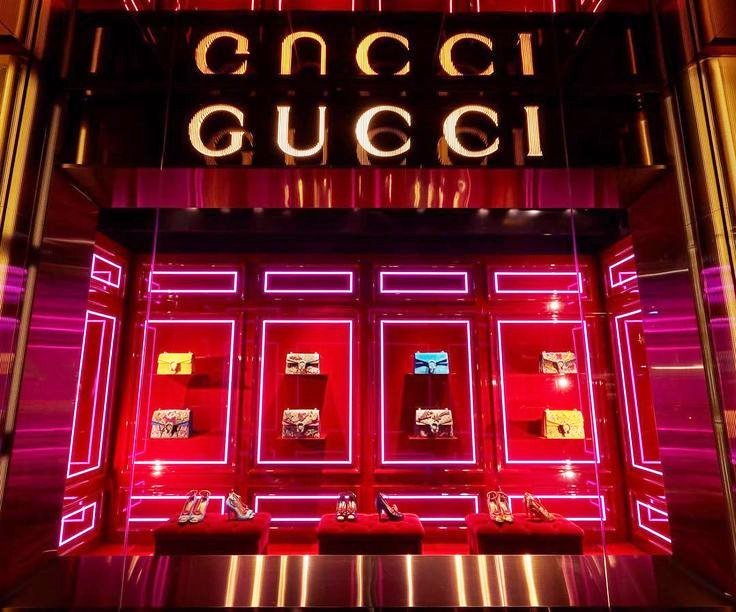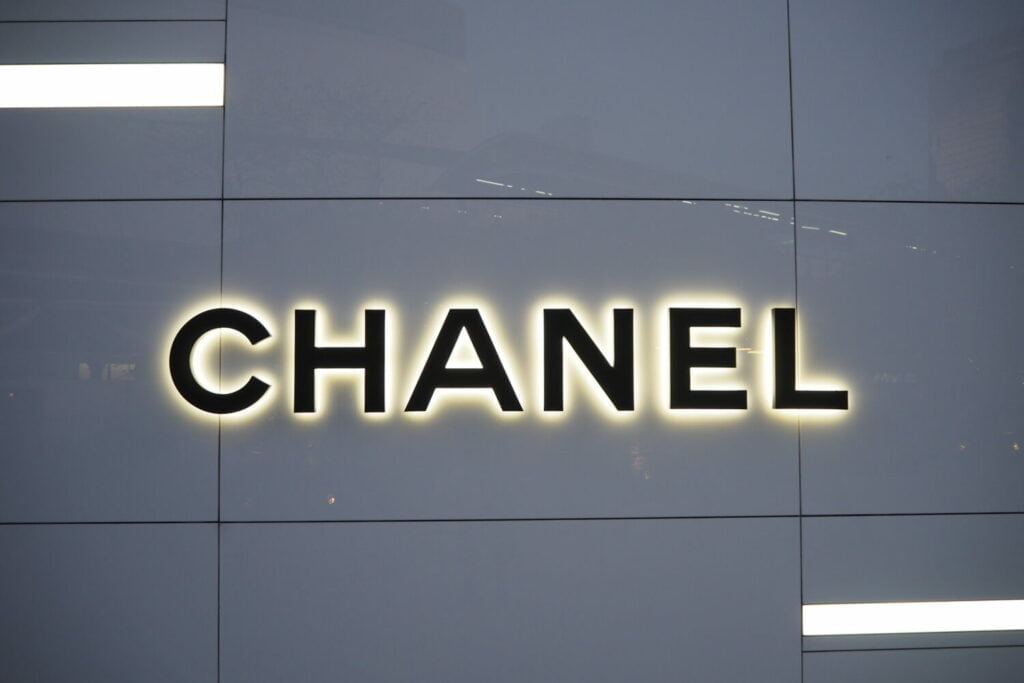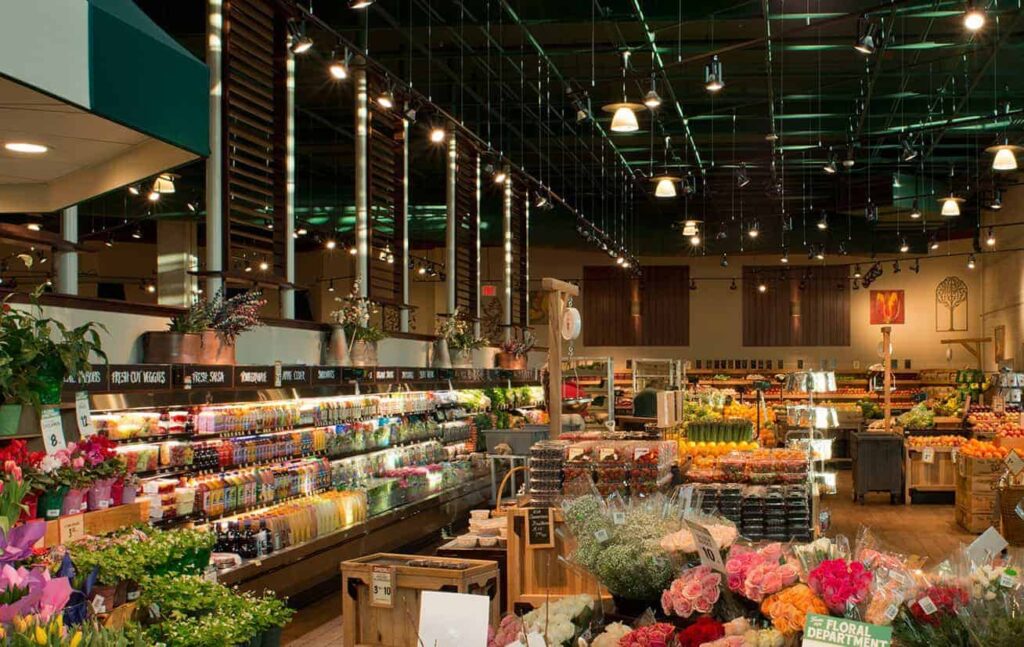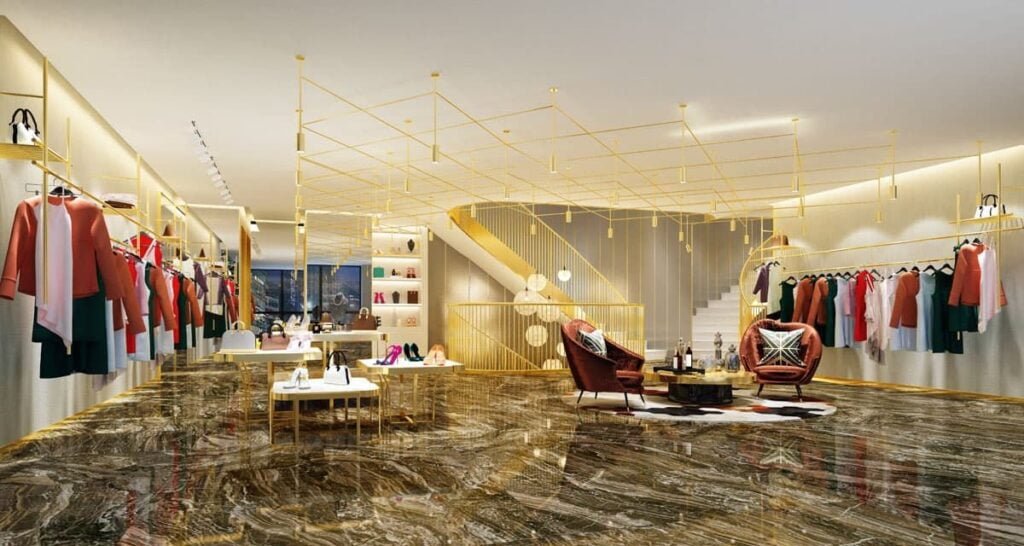The Ultimate Guide to Retail Lighting
Table of Contents
Lighting isn’t just about illuminating a space; in retail, it’s a crucial component of the overall shopping experience. No customer prefers browsing in a dim setting. The fine details of products, often pivotal in purchase decisions, become evident under proper lighting. Beyond mere utility, how products and promotional materials are lit can dictate the store’s footfall.
Now, let’s delve into how to optimize retail lighting.

The Significance of Retail Lighting
Light serves many purposes, from establishing ambience to influencing a purchase choice. An inviting lighting draws shoppers in, allowing them to inspect products up close.
Strategically placed lighting can also guide customers throughout the store, fostering a sense of trust, as it subtly communicates transparency in product quality. Moreover, a well-lit ambience can enhance dwell time, bolstering sales.
Employee well-being is another facet impacted by lighting. Various studies suggest that lighting influences mood. Bright lights resembling natural daylight can invigorate, whereas more astonishing mornings might induce feelings of relaxation or lethargy due to melatonin production.
Balancing these lighting elements can amplify customer attraction and boost employee morale, culminating in heightened sales and productivity.

The Advantages of Retail Lighting
Retail lighting isn’t monolithic; there’s a spectrum to explore. Let’s glance at some of its key advantages:
- Customer Attraction: An illuminated store naturally draws attention. Take a jewelry store, for instance. Proper lighting can make jewelry pieces gleam and glint, beckoning potential buyers. Integrating a mix of colors, especially primary ones like red, yellow, and green, can further enhance the appeal, as these colors have proven high conversion rates.
- Driving Sales : The clarity offered by adept lighting can underscore the minutiae of product designs, dispelling any qualms about quality and propelling purchases.
- Amplifying Brand Recognition: Every retail storefront is adorned with signage and promotional banners. Illuminating these elements ensures visibility from afar and accentuates the store’s presence, drawing more onlookers.
- Boosting Productivity: The psychological effects of lighting aren’t limited to customers. Employees, too, can thrive under optimal lighting conditions. Tailoring the store’s lighting to foster alertness can lead to better customer interactions and, in turn, higher sales.
Different Types of Retail Lighting

Lighting is a critical component in setting the mood and functionality of retail space. Familiarizing oneself with the varied lighting types ensures an optimal store environment. Let’s delve into the different kinds:
1. Ambient Lighting
This serves as the store’s primary light source. It aims to make the space functional and inviting. To strike the right balance, ambient light shouldn’t be excessively bright to cause glare or too dim, making the store appear unwelcoming. Factors like ceiling height and room dimensions are pivotal in choosing the appropriate brightness and size.
2. Accent Lighting
Want to spotlight a new collection or specific product? Accent lighting is your answer. This spotlighting technique grabs customers’ attention, urging them towards highlighted items.
3. Decorative Lighting
This type aims to elevate the store’s aesthetic appeal. Decorative lights, true to their name, serve as decor elements. While they enhance a store’s ambience, ensuring their design aligns with its theme and brand identity is essential.
4. Task Lighting
Certain store sections, like changing rooms or product examination areas, need enhanced lighting. Task lighting serves this purpose, providing the necessary illumination for specific tasks.
Are LEDs a good choice for retail stores?
Various lighting options are available, from halogen lamps to incandescent bulbs. However, LEDs have emerged as the top contender for numerous reasons:
- Energy Efficiency: Retail spaces usually require a myriad of lights. Consequently, energy consumption can soar. LEDs combat this by using approximately 90% less energy than traditional incandescent bulbs.
- Durability: Regular bulb replacements can be a hassle. LEDs alleviate this concern by lasting up to 25 times longer than conventional bulbs. While they might have a steeper initial cost, the long-term savings in energy and reduced replacements justify the investment.
Implementing LED Lights in Retail Spaces
One must have a strategy and clear vision to integrate LED lights into a retail setting successfully. Here’s a suggested approach to ensure your store shines in the best light.

Deciphering Retail Lighting Varieties
Retail lighting can be categorized into four primary groups: ambient, accent, task, and decorative. We touched upon these in an earlier section. To effectively illuminate a retail space, it’s essential to comprehend the specific purposes of each type. This knowledge not only aids in proper lighting but also in devising a strategic lighting plan that augments beauty without sacrificing functionality.
Optimizing Ambient Light’s Tone and Intensity
Ambient light holds paramount importance in any setting. Its core function is to maximize an area’s utility. Erring with ambient lighting isn’t an option, given its foundational role in the overall lighting scheme. The quintessential ambient light strikes a balance in its brightness and Color. While brightness is the amount of light emitted, tone defines the light’s Colors.
One can gauge the brightness by the lumens a given light source emits. LEDs that produce 20-40 lumens per square foot are preferable for areas desiring a tranquil ambience. Conversely, 60-80 lumens per square foot LEDs are apt for spaces demanding heightened illumination.
Tone pertains to the light’s Colors. Measured on the Kelvin scale, a higher color temperature emulates daylight, rendering a more relaxed manner. Lights at the lower end of the spectrum yield a cozier, warmer tone. Mixing these can craft the optimal ambience for a retail environment.
Choosing the Right Light Fixture
In tandem with the light source, the light fixture plays a pivotal role in retail illumination. Your choices range from adjustable to pendants, reels, suspended luminaires, and directional downlights.
These fixtures modulate light in unique ways. For instance, flush recessed fixtures spread light more diffusely than directional downlights. A suspended luminaire ensures even light distribution, whereas track lighting zeroes in on particular zones.
Varied lighting types necessitate distinct fixtures. An even light distribution might be apt for ambient lighting, while accent or decorative lights could benefit from a more focused institution.
Drafting a Lighting Strategy
With a solid grasp of retail lighting intricacies, the next step is charting a plan. Acquire the store’s blueprint to discern the lighting needs of each section. Pinpoint the appropriate tone, brightness, and fixture tailored to every space. While innovation in design is encouraged, it’s imperative that the chosen lighting aligns with the essence of the retail store’s merchandise.
9 Tips for Best Retail LED Lighting
Consider these nine items when designing your store’s LED retail lighting arrangement.
- Contrast: Contrast, highlight, and definition are more significant than brilliance alone
- Floor: Add targeted accent lighting on lower shelves to lift sales
- Vertical: Vertical lighting helps customers feel better adapted to retail spaces
- Build Light-in: Integrate retail shelf LED lighting to upturn product prominence
- Accent: Accent lighting increases display and shelf charm while increasing product sales
- Don’t flood: Shoppers favor diverse, layered light rather than a necessary flood of light
- 3000K-4000K: best color temperatures for driving retail sales
- High CRI: go with LED lights that have a color rendering index of 85-90 for high-quality light
- Design with Color: add Color tactically to sway sales, add cool backgrounds for extra purchases
Essential Factors to Consider When Illuminating a Retail Space

Before embarking on the journey of lighting up a retail store, there are vital elements to consider, such as:
1. Color Temperatures:
The color temperature of LED lights, measured in Kelvins, plays a significant role in setting the ambience. Lights below 4000 K exude warmth, fostering a cozy atmosphere. On the other hand, those above 4000 K emulate natural daylight, invigorating the surroundings. The key is to strike a balance where customers feel at ease while ensuring staff remain alert.
2. Color Rendering Index (CRI):
CRI gauges the accuracy of light in replicating natural daylight. High CRI lighting renders products in their true colors, which is crucial for customers to assess how products appear in natural settings. While a CRI of 80 or above is generally recommended, specific store sections might benefit from different CRI levels. Comprehending CRI can aid in achieving optimal illumination.
3. Beam Angle:
This represents the direction and width of the light’s projection. The wrong beam angle could lead to glare and discomfort. Depending on the area, a narrow focus might be suitable for highlighting a product, whereas broader beams might be preferable for general lighting.
4. Smart LEDs:
Offering unmatched adaptability, Smart LEDs allow store owners to adjust color temperatures, patterns, and brightness via a smartphone. This dynamic feature instantly transforms a store’s ambience, making it a valuable asset for accent lighting. However, while their functionality is alluring, they are expensive.
Conclusion
Efficiently illuminating a retail space requires meticulous planning to ensure customers’ welcoming ambience without sacrificing functionality. Being well-versed in lighting fundamentals can simplify this process. We trust this overview has equipped you with those essentials.
Should you be in the market for top-tier LED strips or LED neon flex, MyLikeLed is your go-to. Our products undergo rigorous quality checks in state-of-the-art labs. We pride ourselves on offering tailored solutions to meet your specific needs. For unmatched LED solutions, reach out to MyLikeLed today!
FAQs
Lighting is crucial because it directly influences customer mood, behavior, and buying decisions. Good lighting makes products look more appealing, creates a welcoming atmosphere, and highlights key areas, all of which can increase sales.
Retail spaces typically use ambient, task, accent, and decorative lighting. Each type serves a specific purpose, from overall illumination to spotlighting products and enhancing the store’s aesthetic.
You should base your choice on your store’s size, layout, brand image, and the type of products you sell. Consider layering different lighting types to create a balanced and flexible environment that guides customers naturally through the store.
A neutral to cool white (between 3000K to 5000K) is generally best for retail. It keeps products looking true-to-color, creates a clean and vibrant feel, and encourages customers to spend more time browsing.
Yes, lighting has a powerful psychological effect on customers. Bright, well-placed lighting can make customers feel more comfortable, direct their attention to featured products, and even increase the likelihood of making a purchase.
You should assess and adjust your lighting at least once a year or whenever you change your store layout, update your branding, or notice areas that seem dim, outdated, or ineffective in showcasing your products.

Hi, I’m Xylia Xiong, a sales professional with 14 years of experience in the LED strip light industry. I specialize in providing tailored solutions, leveraging my expertise in LED products and the latest industry trends. Known for effective communication and problem-solving, I’m dedicated to helping lighting manufacturers, importers, and distributors achieve their goals.
Let’s work together to create customized solutions that exceed expectations.
Related Posts

The Best LED Strip Lights You Can Buy Right Now

Comparing WS2811 Vs WS2812B: Key Differences


